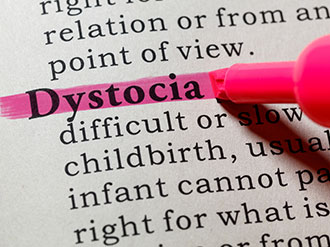|
|
Last Modified on Jun 19, 2025
One complication of birth injuries is shoulder dystocia. This condition develops when an infant’s shoulders get stuck in the birth canal during delivery, posing substantial risk to both the baby and the mother.
The condition is especially problematic because it is not generally predictable nor preventable, except by Cesarean section. Mothers can be affected by tears to their uterus, cervix, vagina and rectum that cause post-natal bleeding.
Infants are at greater risk from the trauma, including
- Nerve damage to the hands, arms or shoulders.
- Paralysis and shaking.
- Brain damage from oxygen deprivation.
- Death.
Milder cases of nerve damage may self-resolve within the infant’s first year.
While the condition can arise suddenly with no warning, there are some signs that indicate a woman may be at higher risk for shoulder dystocia. They include:
- Gestational diabetes.
- Epidurals during birth.
- Large birth-weight babies.
- Obesity.
- A history of shoulder dystocia or delivering large birth-weight babies.
- Deliveries with vacuum suction or forceps
- Pregnancies with multiple babies.
- Induced labor.
Doctors and other health care providers can lower the risk of shoulder dystocia by employing certain techniques during labor and delivery. They can include repositioning the baby while still inside its mother, doing an episiotomy prior to delivery, pushing the mom’s thighs to her abdomen and pushing on her lower belly.
If an obstetrician or midwife is negligent in his or her care of a woman in labor and delivery and shoulder dystocia results, the mother may have a cause of action to pursue a legal claim against the negligent parties.
Source: March of Dimes, “Shoulder dystocia,” accessed Jan. 28, 2016





